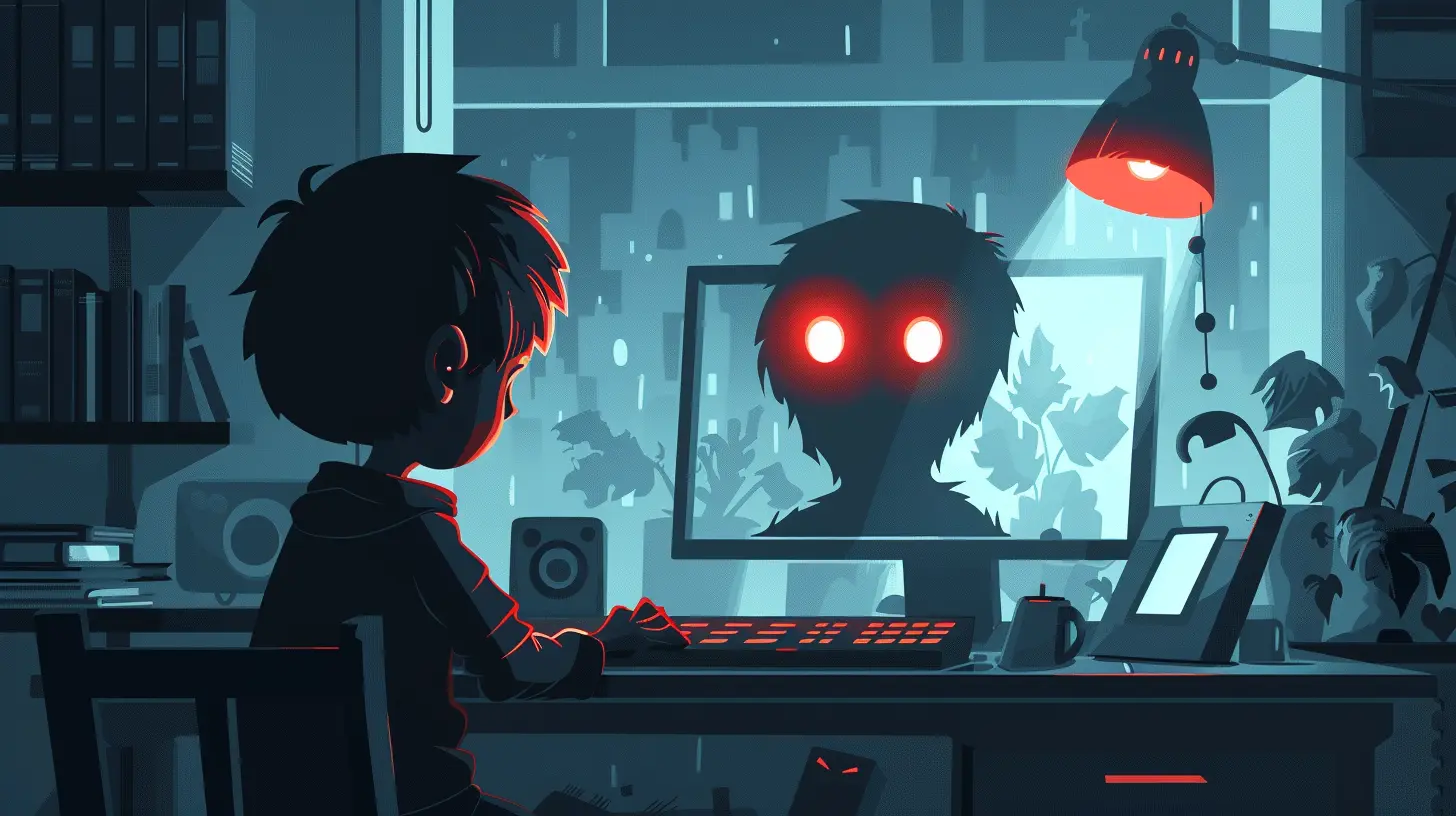How to Help Your Child Recognize and Avoid Online Predators
9 July 2025
Let’s get real for a second—our kids are growing up in a digital world that’s way different from the one we knew. Back in the day, we worried about stranger danger at the park. Now? Those same dangers are hiding behind usernames, profile pictures, and friendly conversations on social media, games, and chat apps.
As parents, our job isn’t just to hand over a tablet and hope for the best. It’s to guide our kids through the online world just like we taught them to look both ways before crossing the street. That means having honest conversations, setting boundaries, and—yes—even learning something about apps we probably can’t stand.
So let’s dive deep into how you can help your child recognize and avoid online predators. It's not about scaring them—it's about empowering them.
Why This Matters More Than Ever
Online predators aren’t just lurking in dark, creepy corners of the internet. They’re on platforms our kids use every day—YouTube, Instagram, Roblox, Snapchat, TikTok, and even seemingly innocent games.Predators know how to manipulate. They pretend to be someone they're not. Sometimes they're kids themselves—or at least they pretend to be.
The scary part? These predators are patient. They build trust over time. They groom.
So yeah, this isn’t a one-and-done conversation. This is an ongoing, open dialogue.
What Does an Online Predator Look Like?
Honestly? There's no single "look." They can be anyone.But here are some red flags to help your child (and you) spot troubling behavior:
- Someone who wants to keep the conversation a secret.
- They ask for personal information—like where your child lives or goes to school.
- They move the conversation to private messaging quickly.
- They start asking for pictures or talking about things that feel “too old” for your child.
- They make your child feel special or give them lots of attention fast. (Classic grooming.)
The bottom line? If it feels weird, it probably is.
The First Step: Start the Conversation Early
You can’t wait until your child is a teenager to talk about online safety. These days, kids are online as early as preschool.Make online safety part of the normal conversation—like brushing teeth or wearing a seatbelt.
Say things like:
> “Hey, if someone ever says something online that makes you feel weird or uncomfortable, tell me immediately. No judgment.”
> “Never share personal info—like your full name, school, or address—with someone online, even if you think they're your age.”
Keep your tone casual, not scary. Let them know you’re their safe space. You’re not the internet police—you’re their guide.
Teach Them About Online Friendships
Kids form real friendships online. That’s not necessarily a bad thing. But it’s important they understand the limits.Here’s a good way to frame it:
> “Being kind online is great! But just like in real life, not everyone is who they say they are.”
Encourage them to keep online interactions in public chats—where behavior can be monitored. Private chats should raise a red flag, especially with new online “friends.”
Also, make it clear: no meeting up in person with online friends—period. Unless you, the parent, are in the loop, involved, and present.
Build Their Critical Thinking Muscles
Kids might not naturally question strangers who seem nice—that’s just how kids are wired. But we can teach them to be thoughtful and cautious.Ask questions like:
- “What would you do if someone online asked for a secret?”
- “Why do you think someone might pretend to be someone else?”
- “How would you know if someone is lying online?”
Think of it like giving them a compass. You’re helping them navigate, not scaring them out of the forest.
Set Up Tech Boundaries (Without Being a Helicopter Parent)
You don’t need to hover over their shoulder—but you do need to be involved.Here’s how:
- Check privacy settings on every app or game they use.
- Disable chat features if they don’t need them.
- Use parental controls where appropriate.
- Keep devices in common areas. Bedrooms + screens = trouble.
- Have them check with you before downloading new apps.
Think of it like driving lessons. You wouldn’t toss your kid the car keys at 12. You’d teach, supervise, and gradually give more freedom. Do the same with tech.
Roleplaying: Not Just for Theater Kids
Yup, roleplaying. Sounds silly, but it's incredibly effective.Act out situations with your child. Pretend to be someone online asking for private info or trying to move the chat to another platform. Then ask your child how they’d respond.
Make it a game—but a meaningful one.
This way, they get to practice their instincts with you before they’re alone with a real-life situation.
Keep the Door Wide Open
The mistake a lot of parents make? Shutting down the conversation after “The Talk.”But this isn’t just a one-and-done deal.
Tech changes. Platforms evolve. Predators adapt.
So revisit the topic often. Ask open-ended questions. Stay curious and non-judgmental, so your child actually feels safe coming to you when something weird happens.
What To Do If Something Feels Off
Let’s say your child comes to you and says they’ve had a weird interaction online. First off—celebrate that they told you. That’s huge.Then:
1. Don’t freak out. (Even if you want to.)
2. Block and report the person immediately on the platform.
3. Save screenshots or chat logs in case you need them.
4. Let your child know they’re not in trouble. Shame shuts down honesty.
5. If necessary, file a report with local law enforcement or the CyberTipline (run by the National Center for Missing & Exploited Children).
It’s better to be safe than sorry.
When Should You Worry?
Here are a few signs your child might be involved in an inappropriate online relationship:- They’re secretive about what they’re doing online.
- They suddenly spend WAY more time on certain apps.
- Their mood shifts—especially if they seem anxious or withdrawn.
- They get upset if you try to take away or check their device.
- You catch them lying about who they’re chatting with.
These signs don’t always mean something dangerous is happening—but they should get your attention.
Empower, Don’t Just Protect
You’re not always going to be there. You can’t check every device every second. And honestly? That’s not the goal anyway.The real aim is to raise kids who can think for themselves, trust their gut, and know how to stay safe.
Teach them that being online is like walking through a busy city. Most people are good—but they still need to hold your hand, look around, and stay aware.
Helpful Tools and Resources
A few tools to make your life easier:- Bark – Monitors your child’s messages for inappropriate content or stranger interactions.
- Qustodio – Helps you manage screen time and monitor online activity.
- NetSmartz Kids – Offers videos and games to teach children about online safety.
- National Center for Missing & Exploited Children (CyberTipline) – Where you can report suspected predators.
Don’t go it alone—there’s help out there.
Final Thoughts: Your Child’s Safety Starts With You
Look, none of us have all the answers. We’re learning as we go—even as technology changes at lightning speed.But here’s the truth: YOU are your child’s first and best defense.
Not software. Not privacy settings. Not even school talks.
Kids need someone they trust, someone they can talk to, someone who gets it. And that someone is you.
So keep showing up. Keep asking questions. Keep listening—even when the answers make you cringe.
Because when we keep the conversation going, we don’t just protect our kids—we empower them to protect themselves.
And that might be the most important lesson we’ll ever teach them.
all images in this post were generated using AI tools
Category:
Online SafetyAuthor:

Austin Wilcox
Discussion
rate this article
2 comments
Shania Franklin
Empower your child with knowledge and open communication to navigate online spaces safely.
November 30, 2025 at 4:54 PM

Austin Wilcox
Absolutely! Open communication and education are crucial in helping children stay safe online.
Quentin McKibben
Empower your child with knowledge—safety first, exploration second! 🌟
July 25, 2025 at 4:49 AM

Austin Wilcox
Absolutely! Educating your child about online safety is crucial in helping them navigate the digital world confidently and securely. 🌐✨


